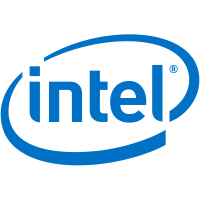Intel UHD Graphics 750 versus NVIDIA GeForce GTX 780M
Comparaison des cartes vidéo Intel UHD Graphics 750 and NVIDIA GeForce GTX 780M pour tous les caractéristiques connus dans les catégories suivants: Essentiel, Infos techniques, Sorties et ports de vidéo, Soutien API, Compatibilité, dimensions et exigences, Mémoire, Technologies. Analyse du performance de référence des cartes vidéo: PassMark - G3D Mark, PassMark - G2D Mark, Geekbench - OpenCL, CompuBench 1.5 Desktop - Face Detection (mPixels/s), CompuBench 1.5 Desktop - Ocean Surface Simulation (Frames/s), CompuBench 1.5 Desktop - T-Rex (Frames/s), CompuBench 1.5 Desktop - Video Composition (Frames/s), GFXBench 4.0 - Car Chase Offscreen (Frames), GFXBench 4.0 - Manhattan (Frames), GFXBench 4.0 - T-Rex (Frames), GFXBench 4.0 - Car Chase Offscreen (Fps), GFXBench 4.0 - Manhattan (Fps), GFXBench 4.0 - T-Rex (Fps), 3DMark Fire Strike - Graphics Score, CompuBench 1.5 Desktop - Bitcoin Mining (mHash/s).
Différences
Raisons pour considerer le Intel UHD Graphics 750
- La carte vidéo est plus nouvelle: date de sortie 11 ans 9 mois plus tard
- Environ 63% plus de la vitesse augmenté: 1300 MHz versus 797 MHz
- times}x plus de taux de remplissage de la texture: 20.80 GTexel/s versus 102.0 GTexel / s
- Un nouveau processus de fabrication soutient une carte vidéo plus forte, mais moins chaude: 14 nm versus 28 nm
- 8.1x consummation d’énergie moyen plus bas: 15 Watt versus 122 Watt
- 2.1x meilleur performance en CompuBench 1.5 Desktop - Video Composition (Frames/s): 29.322 versus 13.832
- 3.3x meilleur performance en GFXBench 4.0 - T-Rex (Frames): 11068 versus 3351
- 3.3x meilleur performance en GFXBench 4.0 - T-Rex (Fps): 11068 versus 3351
| Caractéristiques | |
| Date de sortie | 2021 versus 11 May 2013 |
| Vitesse augmenté | 1300 MHz versus 797 MHz |
| Taux de remplissage de la texture | 20.80 GTexel/s versus 102.0 GTexel / s |
| Processus de fabrication | 14 nm versus 28 nm |
| Thermal Design Power (TDP) | 15 Watt versus 122 Watt |
| Référence | |
| CompuBench 1.5 Desktop - Video Composition (Frames/s) | 29.322 versus 13.832 |
| GFXBench 4.0 - T-Rex (Frames) | 11068 versus 3351 |
| GFXBench 4.0 - T-Rex (Fps) | 11068 versus 3351 |
Raisons pour considerer le NVIDIA GeForce GTX 780M
- 2.7x plus de vitesse du noyau: 823 MHz versus 300 MHz
- 6x plus de pipelines: 1536 versus 256
- 2.2x meilleur performance en PassMark - G3D Mark: 3805 versus 1727
- Environ 17% meilleur performance en PassMark - G2D Mark: 421 versus 359
- Environ 98% meilleur performance en Geekbench - OpenCL: 12810 versus 6464
- Environ 14% meilleur performance en CompuBench 1.5 Desktop - Face Detection (mPixels/s): 39.934 versus 35.179
- Environ 30% meilleur performance en CompuBench 1.5 Desktop - Ocean Surface Simulation (Frames/s): 705.616 versus 543.594
- Environ 82% meilleur performance en CompuBench 1.5 Desktop - T-Rex (Frames/s): 3.631 versus 1.995
- Environ 68% meilleur performance en GFXBench 4.0 - Car Chase Offscreen (Frames): 4868 versus 2899
- Environ 14% meilleur performance en GFXBench 4.0 - Manhattan (Frames): 3679 versus 3219
- Environ 68% meilleur performance en GFXBench 4.0 - Car Chase Offscreen (Fps): 4868 versus 2899
- Environ 14% meilleur performance en GFXBench 4.0 - Manhattan (Fps): 3679 versus 3219
- 2.3x meilleur performance en 3DMark Fire Strike - Graphics Score: 1466 versus 641
| Caractéristiques | |
| Vitesse du noyau | 823 MHz versus 300 MHz |
| Pipelines | 1536 versus 256 |
| Référence | |
| PassMark - G3D Mark | 3805 versus 1727 |
| PassMark - G2D Mark | 421 versus 359 |
| Geekbench - OpenCL | 12810 versus 6464 |
| CompuBench 1.5 Desktop - Face Detection (mPixels/s) | 39.934 versus 35.179 |
| CompuBench 1.5 Desktop - Ocean Surface Simulation (Frames/s) | 705.616 versus 543.594 |
| CompuBench 1.5 Desktop - T-Rex (Frames/s) | 3.631 versus 1.995 |
| GFXBench 4.0 - Car Chase Offscreen (Frames) | 4868 versus 2899 |
| GFXBench 4.0 - Manhattan (Frames) | 3679 versus 3219 |
| GFXBench 4.0 - Car Chase Offscreen (Fps) | 4868 versus 2899 |
| GFXBench 4.0 - Manhattan (Fps) | 3679 versus 3219 |
| 3DMark Fire Strike - Graphics Score | 1466 versus 641 |
Comparer les références
GPU 1: Intel UHD Graphics 750
GPU 2: NVIDIA GeForce GTX 780M
| PassMark - G3D Mark |
|
|
||||
| PassMark - G2D Mark |
|
|
||||
| Geekbench - OpenCL |
|
|
||||
| CompuBench 1.5 Desktop - Face Detection (mPixels/s) |
|
|
||||
| CompuBench 1.5 Desktop - Ocean Surface Simulation (Frames/s) |
|
|
||||
| CompuBench 1.5 Desktop - T-Rex (Frames/s) |
|
|
||||
| CompuBench 1.5 Desktop - Video Composition (Frames/s) |
|
|
||||
| GFXBench 4.0 - Car Chase Offscreen (Frames) |
|
|
||||
| GFXBench 4.0 - Manhattan (Frames) |
|
|
||||
| GFXBench 4.0 - T-Rex (Frames) |
|
|
||||
| GFXBench 4.0 - Car Chase Offscreen (Fps) |
|
|
||||
| GFXBench 4.0 - Manhattan (Fps) |
|
|
||||
| GFXBench 4.0 - T-Rex (Fps) |
|
|
||||
| 3DMark Fire Strike - Graphics Score |
|
|
| Nom | Intel UHD Graphics 750 | NVIDIA GeForce GTX 780M |
|---|---|---|
| PassMark - G3D Mark | 1727 | 3805 |
| PassMark - G2D Mark | 359 | 421 |
| Geekbench - OpenCL | 6464 | 12810 |
| CompuBench 1.5 Desktop - Face Detection (mPixels/s) | 35.179 | 39.934 |
| CompuBench 1.5 Desktop - Ocean Surface Simulation (Frames/s) | 543.594 | 705.616 |
| CompuBench 1.5 Desktop - T-Rex (Frames/s) | 1.995 | 3.631 |
| CompuBench 1.5 Desktop - Video Composition (Frames/s) | 29.322 | 13.832 |
| GFXBench 4.0 - Car Chase Offscreen (Frames) | 2899 | 4868 |
| GFXBench 4.0 - Manhattan (Frames) | 3219 | 3679 |
| GFXBench 4.0 - T-Rex (Frames) | 11068 | 3351 |
| GFXBench 4.0 - Car Chase Offscreen (Fps) | 2899 | 4868 |
| GFXBench 4.0 - Manhattan (Fps) | 3219 | 3679 |
| GFXBench 4.0 - T-Rex (Fps) | 11068 | 3351 |
| 3DMark Fire Strike - Graphics Score | 641 | 1466 |
| CompuBench 1.5 Desktop - Bitcoin Mining (mHash/s) | 78.867 |
Comparer les caractéristiques
| Intel UHD Graphics 750 | NVIDIA GeForce GTX 780M | |
|---|---|---|
Essentiel |
||
| Architecture | Generation 12.1 | Kepler |
| Nom de code | Rocket Lake GT1 | GK104 |
| Date de sortie | 2021 | 11 May 2013 |
| Position dans l’évaluation de la performance | 760 | 756 |
| Genre | Desktop | Laptop |
Infos techniques |
||
| Vitesse augmenté | 1300 MHz | 797 MHz |
| Unités de Compute | 32 | |
| Vitesse du noyau | 300 MHz | 823 MHz |
| Processus de fabrication | 14 nm | 28 nm |
| Peak Double Precision (FP64) Performance | 166.4 GFLOPS (1:4) | |
| Peak Half Precision (FP16) Performance | 1331 GFLOPS (2:1) | |
| Peak Single Precision (FP32) Performance | 665.6 GFLOPS | |
| Pipelines | 256 | 1536 |
| Pixel fill rate | 10.40 GPixel/s | |
| Taux de remplissage de la texture | 20.80 GTexel/s | 102.0 GTexel / s |
| Thermal Design Power (TDP) | 15 Watt | 122 Watt |
| Noyaux CUDA | 1536 | |
| Performance á point flottant | 2,448 gflops | |
| Compte de transistor | 3,540 million | |
Sorties et ports de vidéo |
||
| Connecteurs d’écran | No outputs | No outputs |
| Audio HD reseau 7.1 sur HDMI | ||
| Soutien de DisplayPort Multimode (DP++) | Up to 3840x2160 | |
| Soutien du signal sDP 1.2 | Up to 3840x2160 | |
| Protection du contenu HDCP | ||
| HDMI | ||
| Support du signale LVDS | Up to 1920x1200 | |
| Bitstreaming d’audio TrueHD et DTS-HD | ||
| Soutien de l’écran analog VGA | Up to 2048x1536 | |
Soutien API |
||
| DirectX | 12.0 (12_1) | 12 API |
| OpenCL | 3.0 | 1.1 |
| OpenGL | 4.6 | 4.5 |
| Shader Model | 6.4 | |
| Vulkan | ||
Compatibilité, dimensions et exigences |
||
| Soutien de bus | PCI Express 3.0, PCI Express 2.0 | |
| Interface | MXM-B (3.0) | |
| Taille du laptop | large | |
| Options SLI | 1 | |
| Connecteurs d’énergie supplementaires | None | |
Mémoire |
||
| RAM maximale | 4 GB | |
| Bande passante de la mémoire | 160.0 GB / s | |
| Largeur du bus mémoire | 256 Bit | |
| Vitesse de mémoire | 2500 MHz | |
| Genre de mémoire | GDDR5 | |
| Mémoire partagé | 0 | |
| Configuration standard de la mémoire | GDDR5 | |
Technologies |
||
| 3D Vision / 3DTV Play | ||
| Blu-Ray 3D Support | ||
| CUDA | ||
| Direct Compute | ||
| FXAA | ||
| GPU Boost | ||
| H.264, VC1, MPEG2 1080p video decoder | ||
| Optimus | ||
| TXAA | ||










